Wintertime is just half way through, days are starting to grow longer again at last and besides my daily or weekly work to be done at the yacht refurbishing (read the full article on yacht interior refit here) I am planning the upcoming sailing season – just as many of you fellow seamen are certainly doing as well. For me it´s a bit special since other events are forcing me to let SY OLIVIA on dry land the whole next year (yes, she is not going to see saltwater in 2016) and thus I have to look for alternatives. Besides: My path through the various classes and certificates before allowed to call myself a thorough “yachtmaster” is not over. So this article is about my next steps to becoming one.
A solid Base for the would-be Yachtmaster.
Late 2015 I had started with my first certification, the SBF or ”Sportbootführerschein”. It´s the basic education for skippers and mandatory or all sailors in Germany since this is the official “drivers licence” everybody has to obtain in order to be allowed to officially steer a ship as a skipper. But with the SBF there comes the first disaccord: You are allowed to sail. But you haven´t learned anything about sailing in class. The SBF is just about rules at sea, all the light- and signal-stuff and collision-prevention. Basics in navigational skills as well as converting from magnetic to true course, basic emergency procedures and of course the famous 9 sailor´s knots are dealt with. It´s a pretty tough class with a lot to learn, but without virtually any practical sailing-skills at all. (here´s a complete article on the Sportbootführerschein/SBF See)
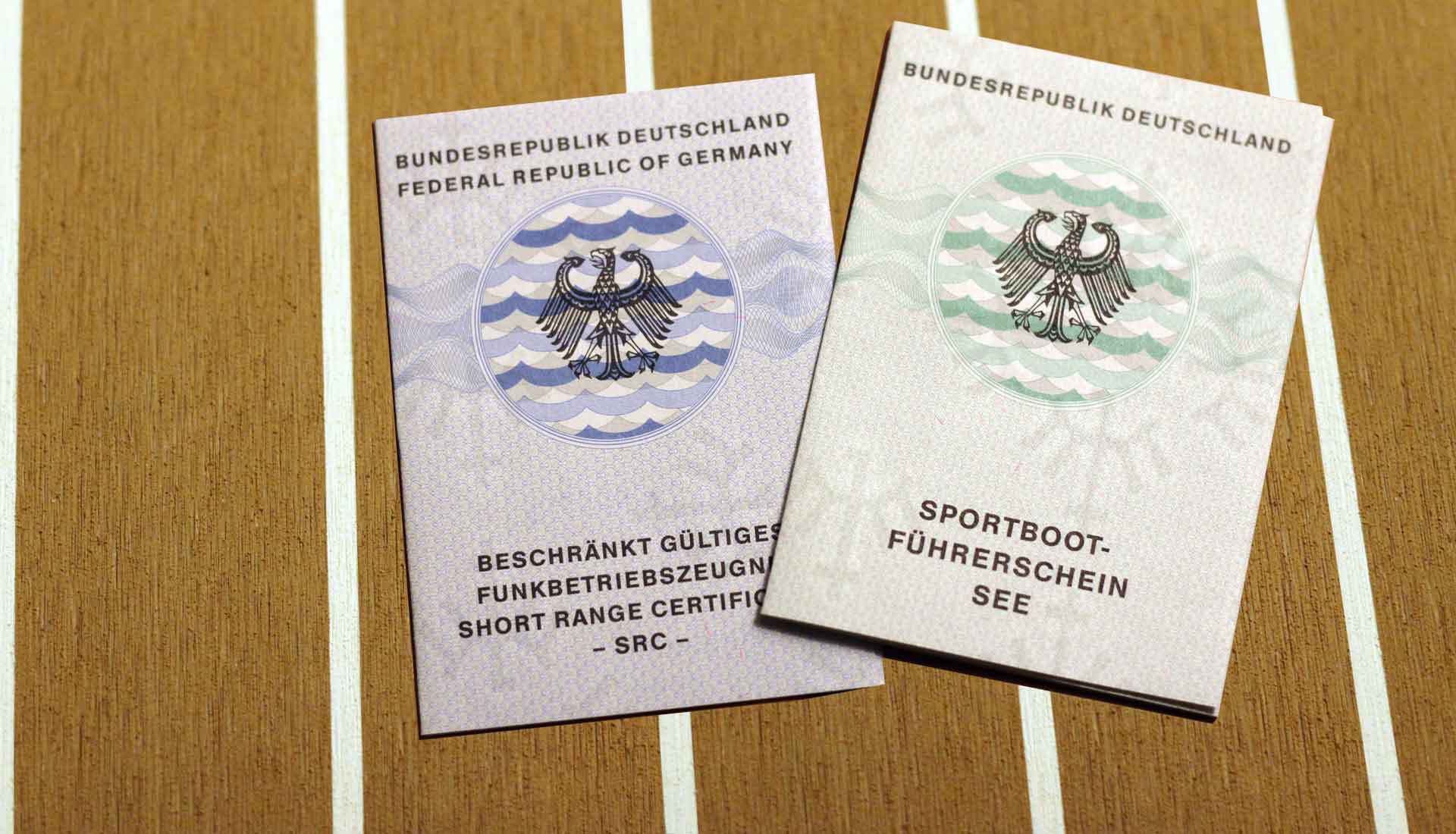
Of course, I had to pass a practical exam but this was onboard a motor vessel and I had to perform standard maneuvers such as MOB, halt on course, tacking and of course casting off and landing. That´s it. You are not able to sail when passing this SBF. Period. 2015 was already drawing to a close and there were no classes in practical sailing available so I used the time to get the SRC-certificate. When a yacht is equipped with a VHF-transceiver (and most yachts have one, should have one) you are required to have this certification passed as well. So it was five days practicing, some 250 questions in multiple choice to learn and I passed that one too some weeks ago (read full article on the Short Range Certificate/SRC here). So what´s next?
Sport-Küsten-Schifferschein (SKS) and RYA Coastal Skipper: Where´s the difference?
Obviously the next steps are quite logical. For me as a German it´s the so called SKS. It´s not a mandatory certification or legally binding but if I´d want to charter a yacht someday most agents want to see that certificate. Besides, the SKS is really a tough nut. Richard Jeske of Well-Sailing puts it this way: “SKS is meant for people who already know how sailing works. They do have a certain amount of experience onboard, they are no lubbers. The whole course is made for applying complex tasks onboard and in sailing to bigger units. A bigger boat for example. You are underway a whole week (that´s the practical part of the class) and what I find is the best part of the whole thing: Everything, I repeat everything you learn here, all the stuff you will practice and work yourself through has a real-life relevance. Simply everything! Even if it´s not part of the exam itself, you will learn so much out of it that the exam itself will be just some kind of a byproduct. What you are going to learn during that one week is absolutely essential and important for you as a future skipper.” All right, so SKS is one step.
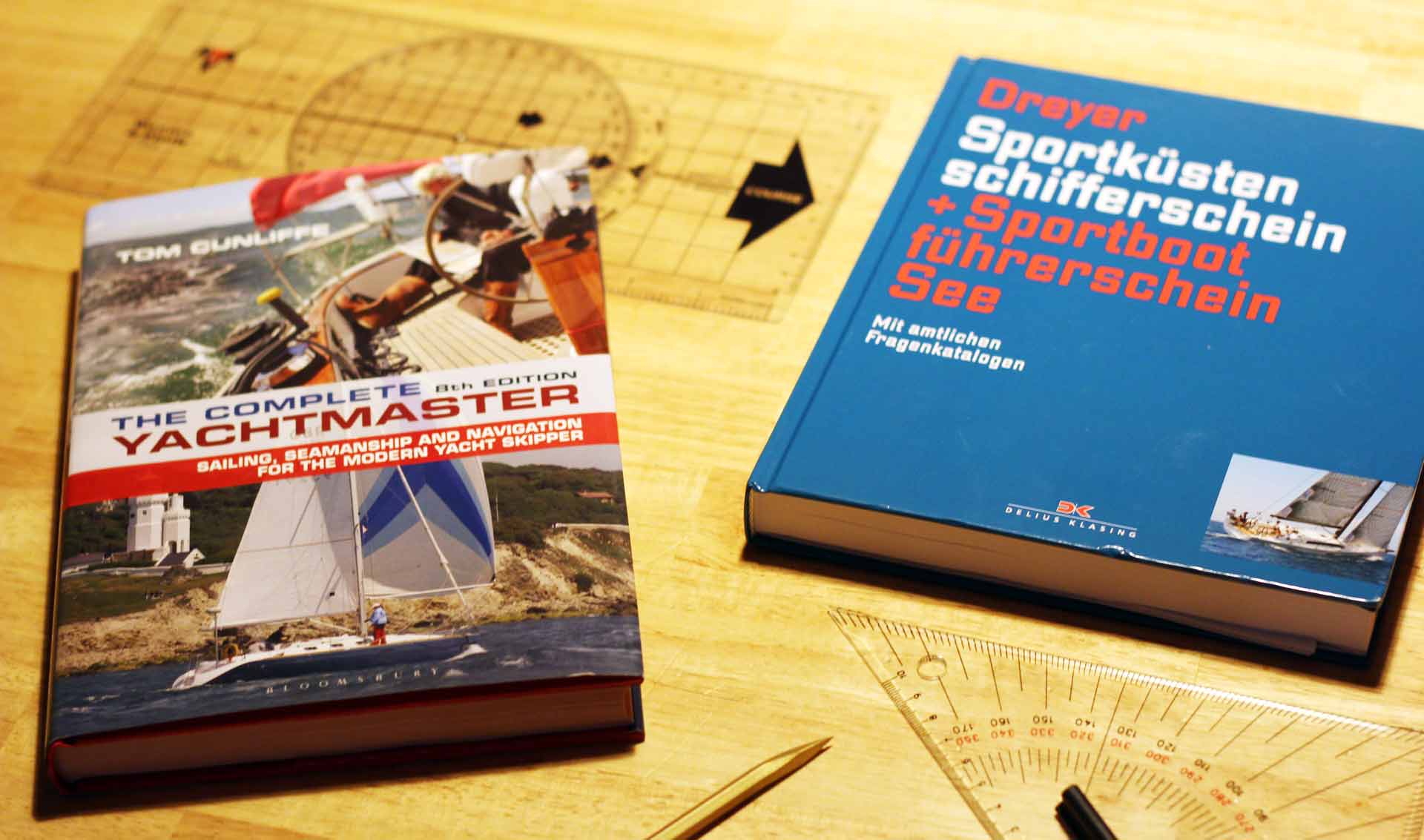
But where is the difference to the RYA Coastal Skipper – if there is one? Richard again: “Absolutely! Our German SKS is comparable to the RYA Coastal. But on the other hand it´s not. I personally think RYA certifications are clearly superior. The Royal Yachting Association´s certificates have a different system as their base, a more profound and practical-oriented one. It´s much more aligned to produce a safe skipper – not a skipper who is able to recall and recite by rote some legislative texts like German skippers can. There´s an examiner coming onboard for three days onto your yacht and he will be there with you. He´s asking questions and will look closely how you act onboard, will gauge your behavior and actions in certain situations. That´s a world closer to reality.”
The Question: Best Way to learn Sailing?
As you may know, I already own a boat, the 33 feet King´s Cruiser 33 SY OLIVIA which is currently in refit-program for her complete interior and electrical system on dry land. After having done some 180 miles on her (on our test-run – article here – and our 3-day transfer cruise to Hamburg – article of our arrival here) I was wondering how I should continue my educational path. Should I attend the standard yawl-course to “work my way up” to the big boats or should I skip this and sign on to a yacht to learn sailing on 30+ feet?

I learned a lot when I was interviewing Richard Jeske, the founder of my sailing school and asked him the same question. He was pretty straight in his answer: “No question, start with yawl-sailing. That´s the best way to learn, try, experiment and finally understand how sailing, sails, wind and boat are working. Begin small, grow bigger.” That was his recommendation. All right. So I guess I´ll follow his advice.
Step 1: Sailing a Yawl.
Beginning in mid-April of the upcoming year I have no booked one of the first classes offered for the basic sailing course on a yawl. The whole class – like every certification you´ll get – is split into a theoretical part and the practical unit. In my case, we have basically three days of theoretical education here in Hamburg. Three days to learn everything from abeam reach sailing, beating or broad reach-courses, how sails work (lifting- and pushing-effect) to the basic maneuvers needed to steer a boat with sloop-rigging. Of course here we´ll get a shot refresh of knowledge already learned from our SBF-courses. Three days will do. Then it´s off to the waters for real sailing-action.
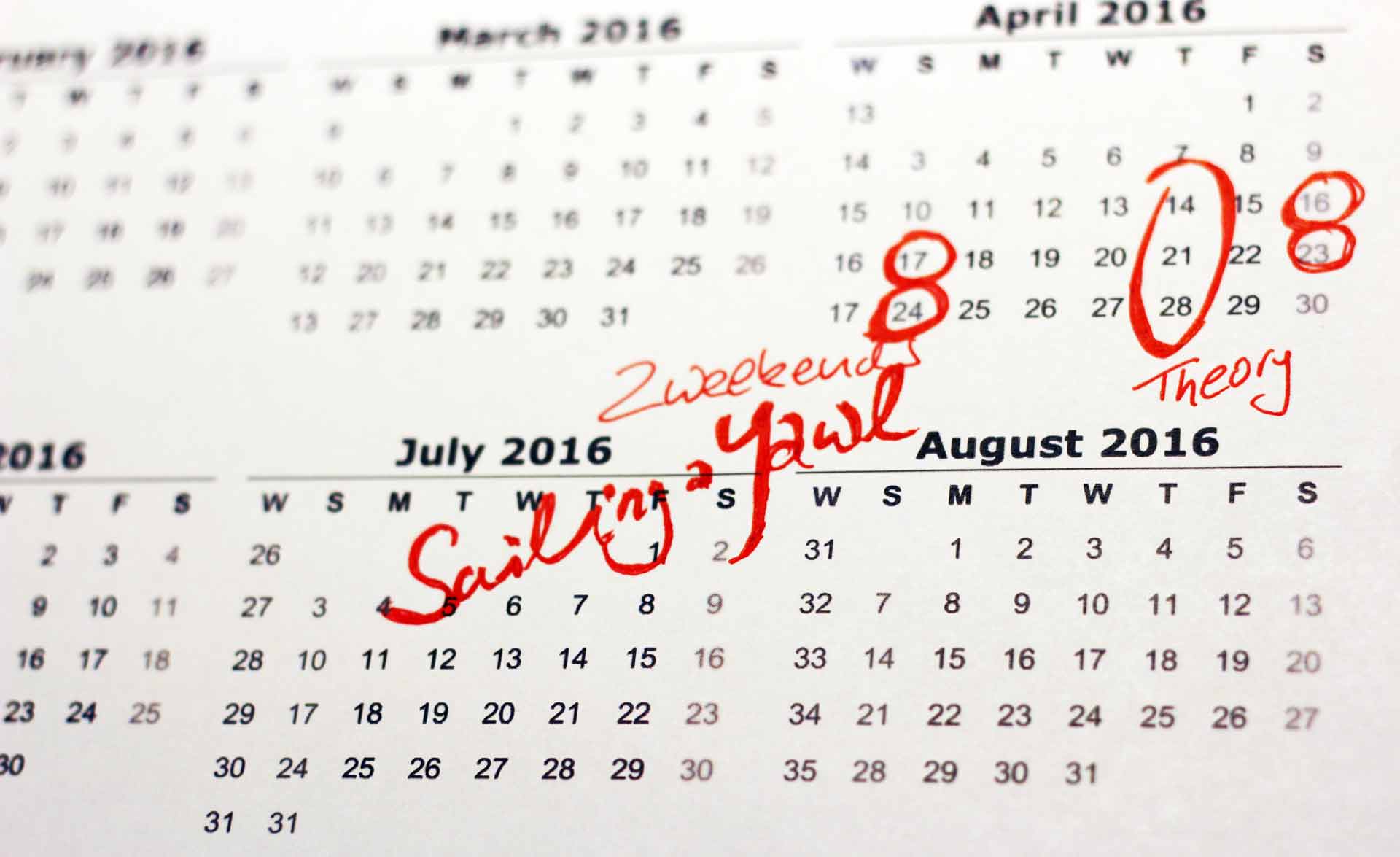
Since my sailing school has two offices namely one here in Hamburg and one in Neustadt directly at the Baltic Sea, the practical part will be done there. It´s two full weekends of yawl-sailing. I really like the prospect of not having to take lessons here on inland waters, the Elbe or the tricky and crowded Alster (a big artificial lake right in the middle of Hamburg) but on a real sea instead. To learn how to do the basic sailing maneuvers like tack, gybe or MOB on the “open sea” is a far better adventure for sure. So I´m really looking forward to these two weekends which can be cleverly combined to a weekend off for the whole family at the sea.
Step 2: Sportküstenschifferschein (SKS) and RYA Coastal Skipper
The equivalent to the RYA Coastal Skipper in Germany is the SKS-certification. When I was talking to Richard Jeske (here´s the full interview) he described the SKS as such: “Regarding the theoretical part you are going to learn much, much more from everything you had to learn for the SBF: Much more navigation. Weather will get a much bigger part and of course again rules and the law.” Oh, yeah, more stuff to learn, just three days in class, the rest will be done by reading books and learning by smartphone app. Well, I admit I really had my problems with the SBF-theoretical stuff. I love navigation, rules and collision-prevention is a no-brainer, but I hated to learn all that lights-and-balls-signaling stuff. I really had a tough way to go and was fearing exam day, was praying for an easy multiple choice test. So, to be honest, I am much more looking forward to the practical part here. Again. Because, sailing with Well-Sailing school is big fun, done on a 46 feet X-Yacht.
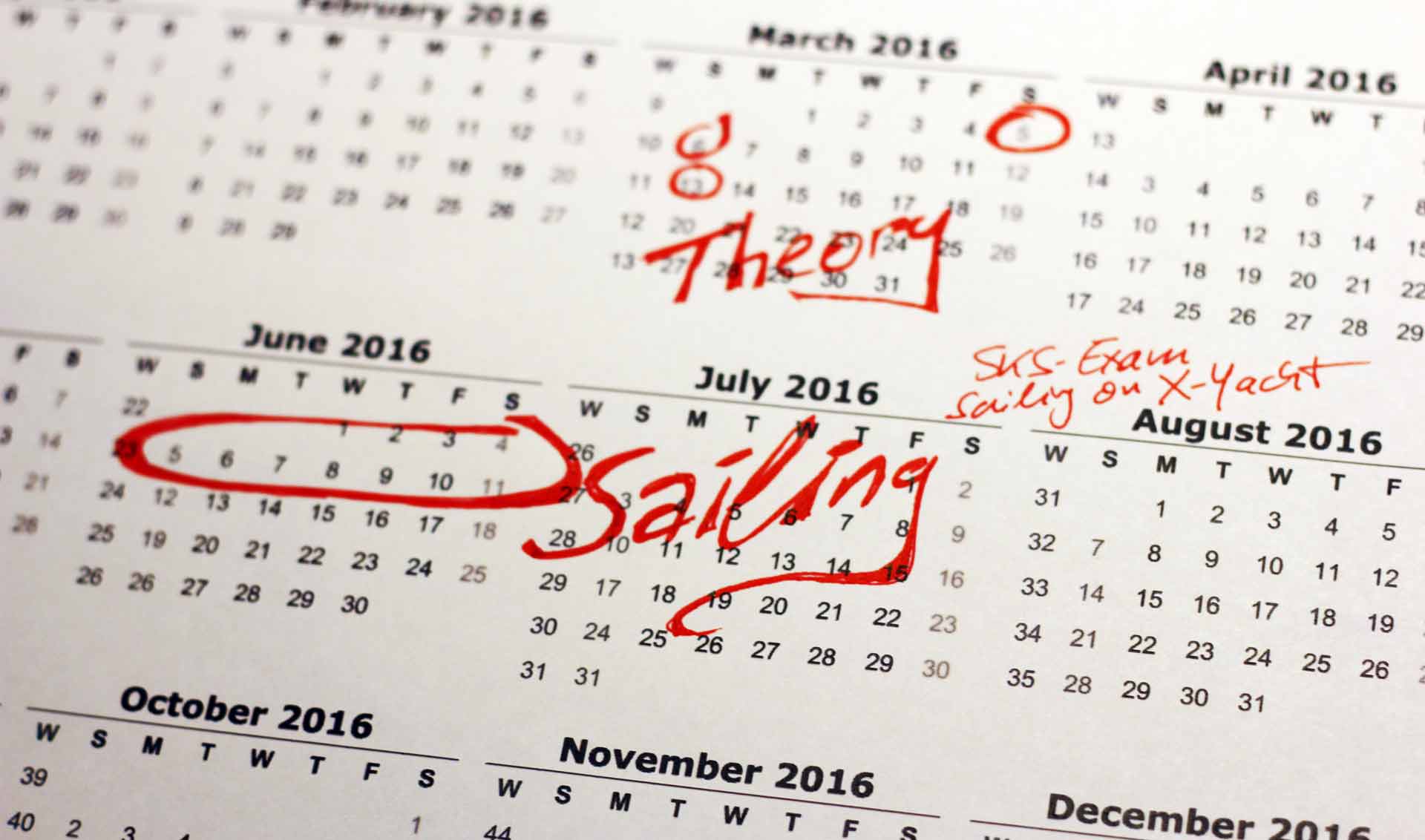
Richard again describes what is waiting for me here: “You will have a load of fun! It´s full seven days onboard our boat with five other attendees and one skilled skipper. A whole cruise on open sea, depending on weather conditions it could mean going all the way up to the Danish south sea or east to Island of Rügen or such.” Concerning the trip he suggested to take the practical part right after accomplishing yawl-sailing because knowledge is still fresh and could thus be applied easily to sailing a big yacht.“ One whole week of sailing, one day of exam. It will be a tough and exciting week to go. Sadly, there wasn´t any class for me still available in late April or May – right after yawl-class – so I took the course early June. Which offered a timeframe for letting come true an idea I´ve had a time ago: Heavy weather sailing.
Step 3: Heavy Weather Sailing Skills.
When I was on the three-day transfer cruise of SY OLIVIA back to Hamburg with my family I´ve had the Pilot onboard. A skilled professional seafarer, himself owning all Captain´s Patents you may know and having commandeered a schooner-rigged Windjammer for some years. When I was talking to him about my plans, he had one hint for me: Attend a heavy weather sailing course! That´s because all the certificates, the exams and alike will be done when weather is appropriate. But learning how a yacht behaves in heavy seas, what it means to sail under difficult circumstances and helming a vessel safely at its edge is a whole different thing. Something one doesn´t want to learn out of the blue with wife and children onboard. So when I roamed the Hanseboot-fair some weeks ago there was a stand offering “raging storms, looping stomachs and tiring, wet, cold hours at the helm.” Perfect!
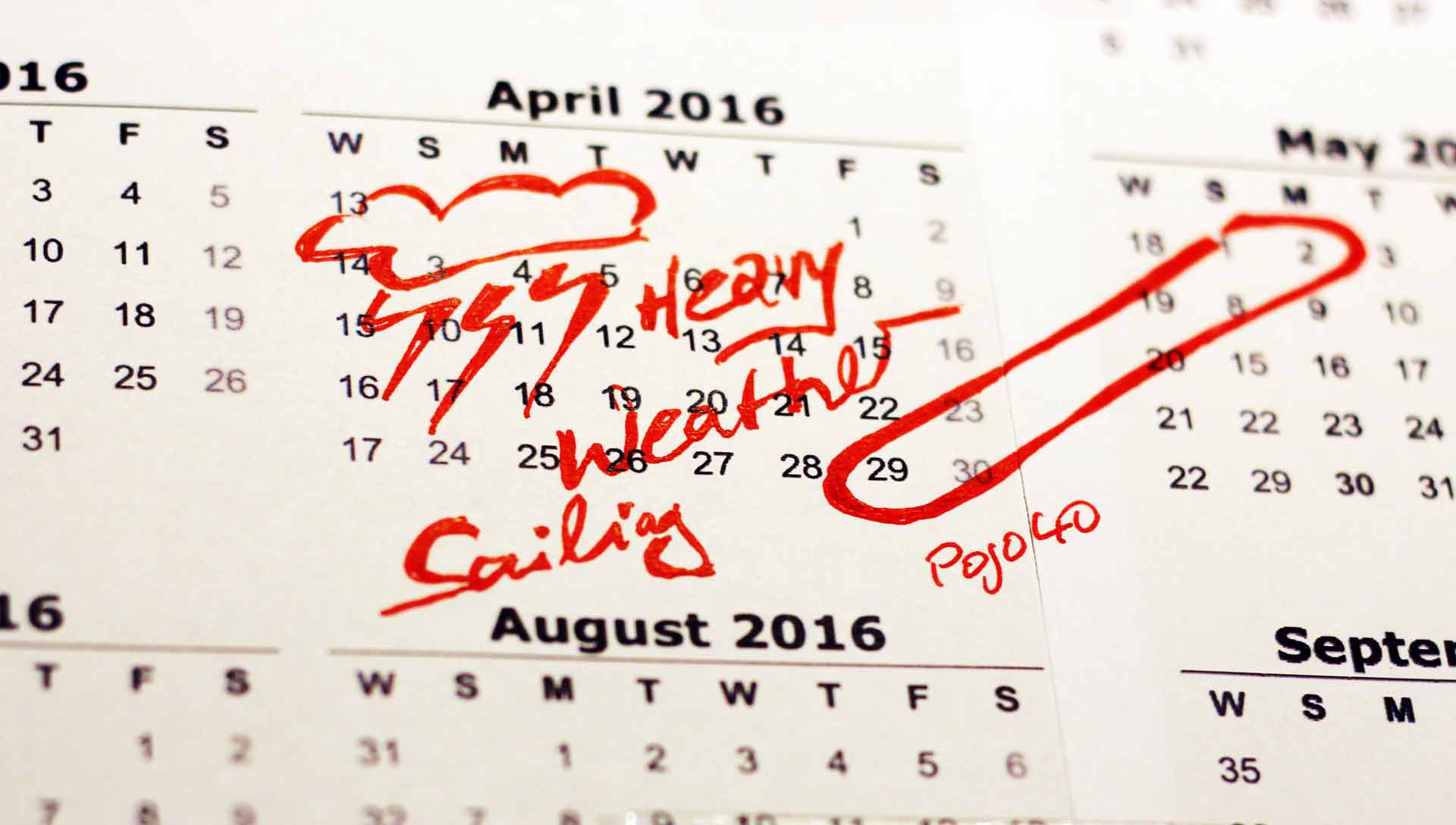
Closing the „gap“ between yawl-sailing and SKS-practical class I am going to attend such a heavy weather cruise. It´s two days from Bremerhaven on a fast-sailing Pogo 40 to Germany´s only offshore Island of Helgoland, some 30 miles off our coast in the midst of a rough, storm plagued and still tide-affected North Sea. Hopefully with an included “Heavy weather warranty” but the North Sea should be rough in April. Four days I am really looking forward to. Besides, precondition for being allowed to do the practical SKS-exam in Germany is a proof of having completed 300 nautical miles on a sailing yacht, confirmed in writing by a skipper. This whole heavy weather cruise will get me some 150 of those …
Miles, Miles, Miles …
Since the practical cruise for SKS will bring 200 miles everything will be fine for examination at last. So these are my plans for the next steps in becoming a skilled yachtmaster in 2016. Step by step from buying my own yacht in September 2015 to refurbishing her in rest ´15 and the whole of the upcoming year to the first half of it claiming the next certificates I think I am on the right path. And a very exciting one too.

What will bring the next year sailing-wise if I won´t have SY OLIVIA in the water? We will see. Certainly I am going to have some smaller trips test-sailing some vessels, I am planning a bunch of interesting articles on my upcoming “Dream Yacht” section here on NO FRILLS SAILING.com for next year. So I am looking forward to hours for hours, days for days and miles for miles of fun, joy, fascination and excitement onboard various yachts, whether afloat or not.
How did you become a skilled yachtmaster and which certifications do you consider necessary? I am looking forward to your comments.
